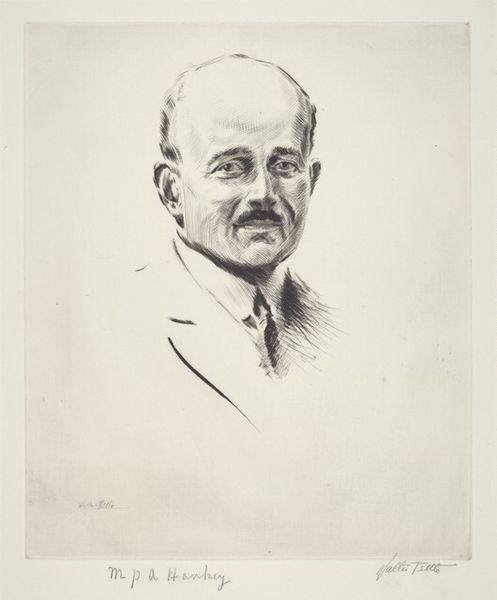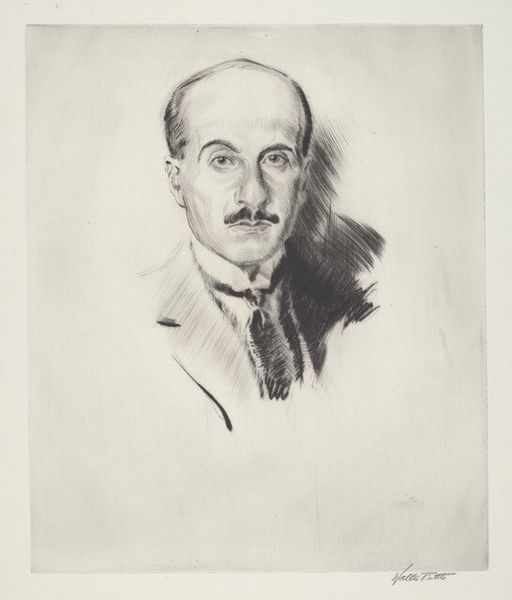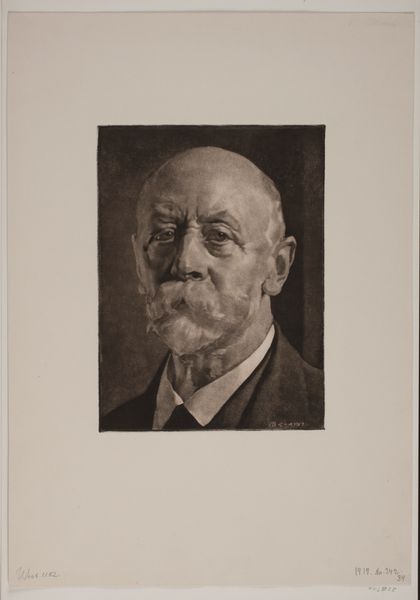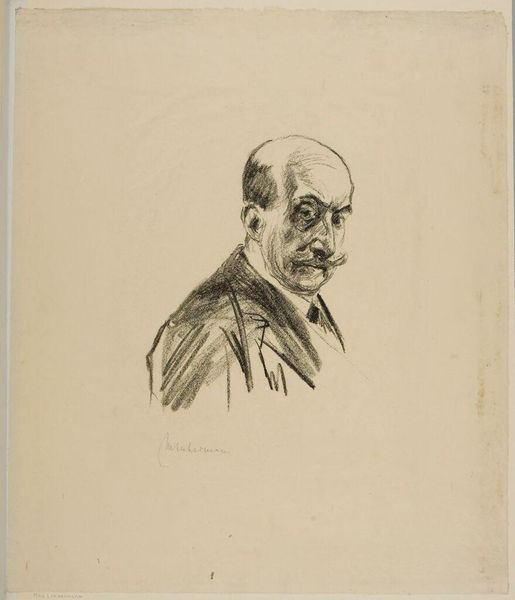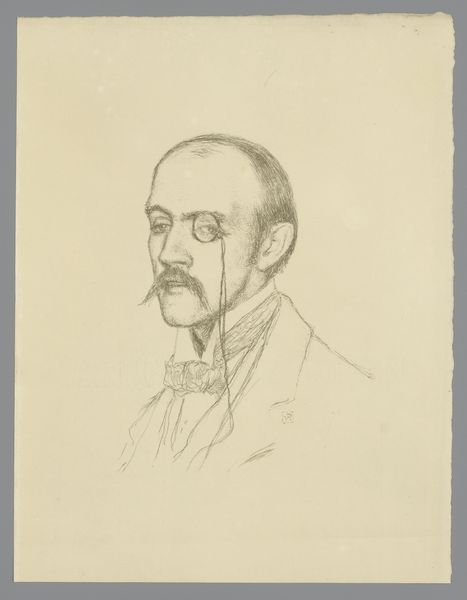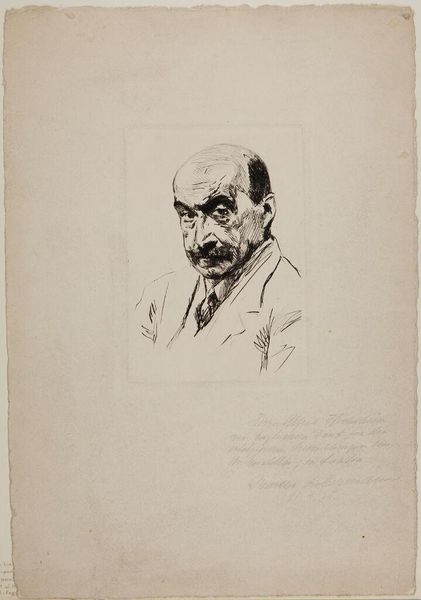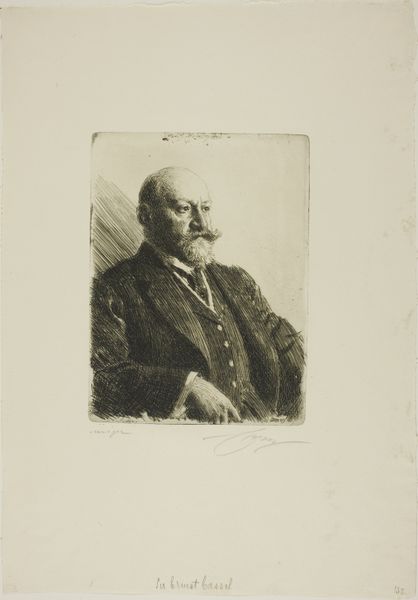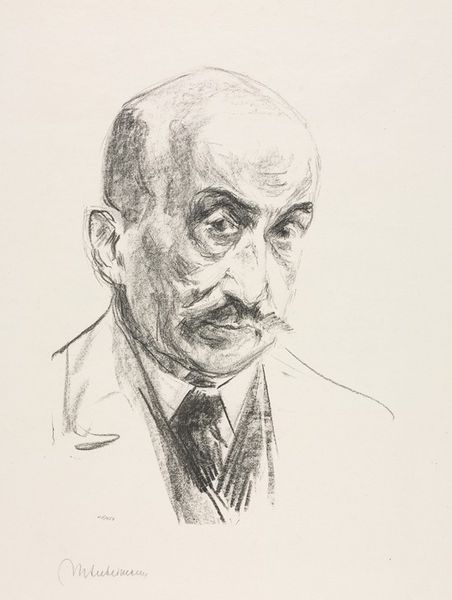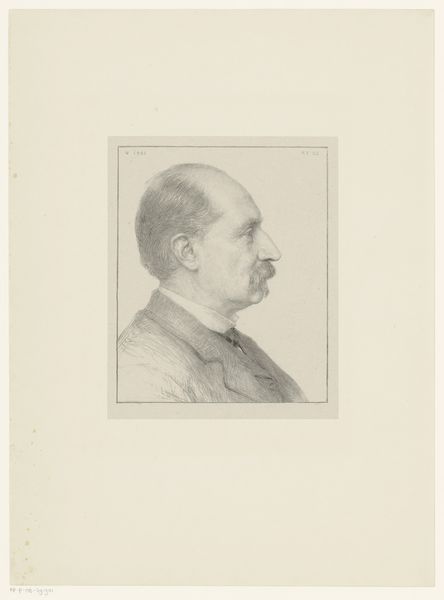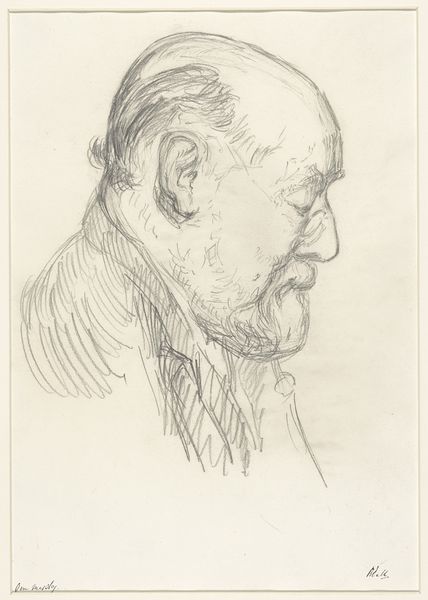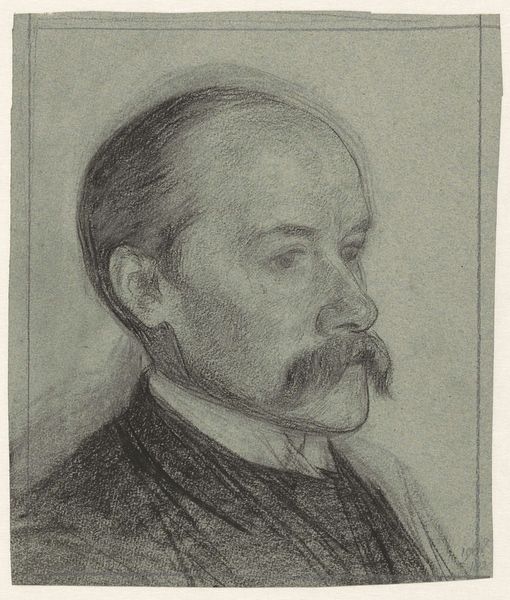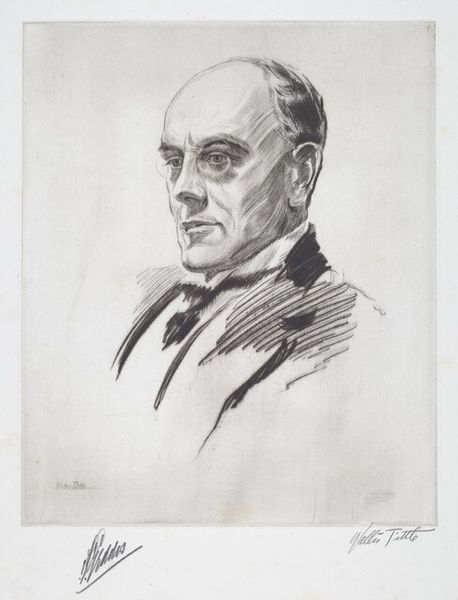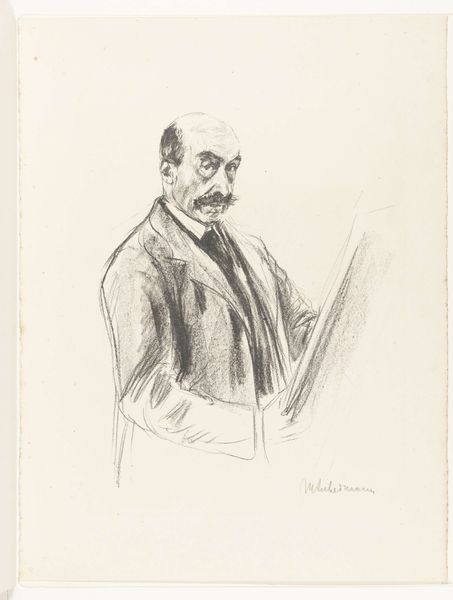
print, etching
#
portrait
# print
#
etching
#
pencil drawing
#
portrait drawing
#
modernism
#
realism
Dimensions: plate: 30.48 × 25.4 cm (12 × 10 in.)
Copyright: National Gallery of Art: CC0 1.0
Editor: We're looking at Walter Tittle's 1922 etching, "John W. Garrett, Esquire, of Baltimore and Washington." It's a portrait, seemingly straightforward, but something about the stark contrast gives it a slightly unsettling mood. What's your take? Curator: Indeed. Focusing on the formal elements, observe the artist’s strategic deployment of light and shadow. Note how the stark lines both define the figure and simultaneously abstract him. Tittle employs hatching and cross-hatching to generate depth, but avoids true tonal realism. What purpose might that serve? Editor: I guess, instead of just representing reality, it draws attention to the printmaking process itself. It makes us conscious of the artist's hand. Curator: Precisely. Consider the varying density of lines. See the heavy, almost gestural marks that form the background juxtaposed with the finer, more controlled lines articulating Garrett's face. These formal contrasts invite a deeper inquiry beyond simple mimesis. The figure's gaze holds an even, almost unsettling stillness. The structural opposition of rendering and medium speaks for itself, don’t you agree? Editor: It's interesting to consider how those stark contrasts, and the varying lines create more depth to it, instead of flatness. Curator: Yes, we might infer that Tittle sought to explore the very nature of representation through line and form, transcending mere likeness to engage with the materiality of the print itself. Editor: That’s given me a whole new way of thinking about portraiture! Thanks for your insights.
Comments
No comments
Be the first to comment and join the conversation on the ultimate creative platform.
